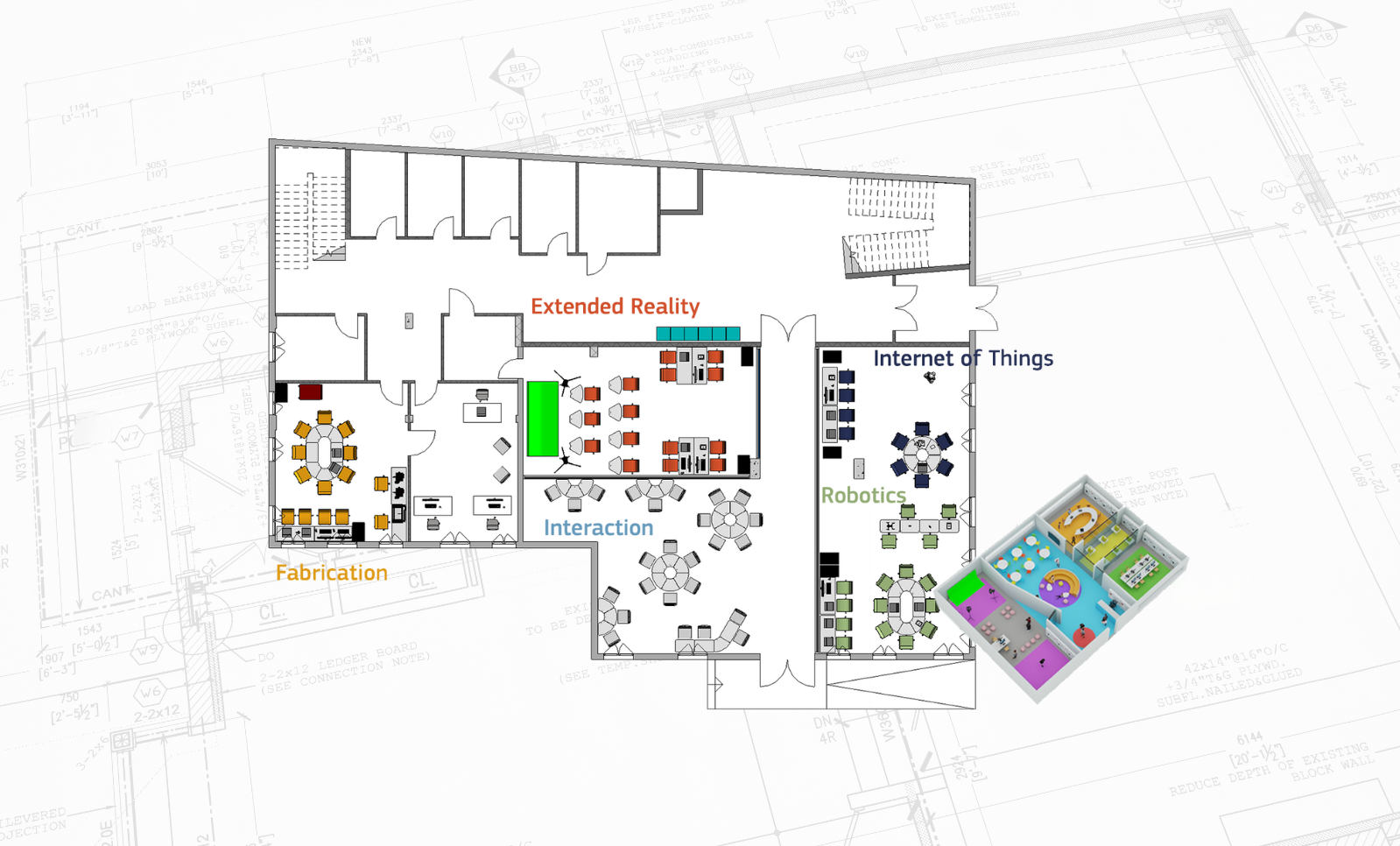
Every Innovation Centre includes:
Extended Reality
Extended Reality (XR) technologies include Augmented Reality (AR) and Virtual Reality (VR) and offer extensive capabilities in the educational process, creating an innovative learning experience!
Equipped with virtual and augmented reality devices, computers, and educational software, this learning space increases interactivity, allowing students to interact with their environment, thereby enriching the learning experience. Additionally, it encourages creative thinking, collaboration, and exploration of cutting-edge technologies, while offering experiences that students wouldn't be able to encounter in any other way!
The area hosting the XR space also serves as a green screen room. An additional proposed activity is for the lab to operate as a virtual collaboration studio, i.e. a synchronous communication/collaboration space between Innovation Centres in other regions.
Internet of Things
In the IoT learning space, students delve into the realm of artificial intelligence, machine learning, big data, and the Internet of Things! Through hands-on applications, they understand and develop programming/ operating skills tailored to their grade level. Students inquire problems, develop software, and analyze data while being trained in algorithm-based decision making. Through the combined approach of AI and programming, students cultivate critical thinking and problem-solving skills, enhancing their skills for the digital age.
Additionally, a standalone laptop & tablet work area is foreseen, where users/ students have a specific number of workstations for various use (system design, video editing, programming, etc.).
Robotics
In the Robotics learning space students explore the world of science, technology, engineering, and mathematics through hands-on applications and the use of robotic technologies.
The equipment includes robotic arms that allow students to study the motion and the operation of robots, while social robots enhance communication and collaboration skills.
Students engage with electronic kits such as Arduino and Raspberry Pi board, leveraging programming and designing capabilities. STEM tools, such as sensors, models, and experimental scenarios, provide additional opportunities for creative approaches.
Within this stimulating environment, students develop critical thinking, problem-solving, and collaborative skills and prepare for the technological era we are living in.
Fabrication
The Fabrication learning space is an educational environment that combines digital and hands-on creation, offering a variety of tools for developing skills across various fields! Its spatial layout emulates the MIT’s FabLab network of labs.
Within the 3D printer-equipped space, students can turn their digital ideas into tangible objects. Laser and vinyl cutters provide the ability to cut and engrave materials, while the 3D scanner allows physical objects to be visualized in a digital form.
This space isn't limited to digital tools! It also provides hand tools for developing traditional skills. Students have the opportunity to explore their creativity through various approaches, utilizing everything from hammers and pliers to electric tools.
In this multi-dimensional environment, learners develop programming, designing, and crafting skills, enhancing their creativity and enriching their educational portfolio.
Interaction
The Innovation Centre emerges as a dynamic environment that is complemented by a specialized meeting and presentation area, while simultaneously providing a high-level reception space.
The meeting area has the necessary infrastructure for impressive presentations. Equipment includes state-of-the-art interactive whiteboards, sophisticated audio systems, and teleconferencing equipment which enhance the communication effectively.
This space is the focal point for events, student project presentations, and meetings, while also serving as a comfortable reception area, creating a welcoming environment for visitors. The design of this space enhances active participation and interaction while contributing to its flexibility and adaptability to evolving needs.